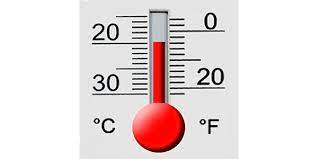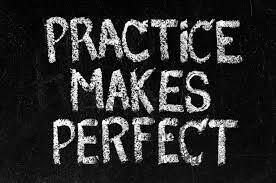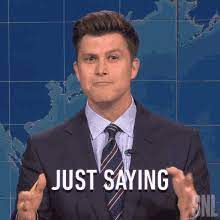
Measurement Blog

What did we do? What were you supposed to learn? What was our Homework? When’s that stuff due?
Friday 9-23
We “celebrated” today. Most of us did. Some of you were not prepared and your grades were not very good. I will have a make up for you to take starting Tuesday, but you have to make it up BY FRIDAY, or else. Hurry or miss your chance. Anyone who takes a make up will get the two grades averaged. I sometimes see marked improvement and “round up a bit more”, but any improvement is something to be thankful for, not complained about. I’ll help you/tutor you before your next try, but Friday is your deadline.
Thursday 9-22
We did the Penny Density Lab, and made it through the first graph. This is our first big lab report, and it’s worth 80 minutes, double the previous two.
Check your grades, hand in stuff now. All HW’s are due, the Measuring Activity is due ASAP. The Penny Density Lab is due Wednesday (or sooner).
Wednesday 9-21
Today we reviewed nearly all that we covered since the beginning (Hello, my name is Charlie Arbuiso, I’ll be your chemistry teacher). We have a big lab – Penny Density Lab on Thursday, then Friday is our first Celebration of Knowledge. 25 questions = 100 points, and you do it alone. Bring a reference table, calculator, pencil and your smart sneakers and sox.
Study means do, make sure you train your hands how to do the math problems. Make sure you write formulas, and make sure you get used to the “look” of the steps to figure things out. Read the first few pages of the arbuiso.com glossary, and the MEASUREMENT BASICS, of course. 
Tuesday 9-20
Today was the day to learn the rules about scientific notation.
Rule One: coefficient must be at least 1, but less than 10. If not, teapot it.
Teapot rule: adjusting coefficients to be between 1 and less than 10, then making an “opposite” adjustment to exponents.
examples:
20 x 105 becomes 2.0 x 106
or
0.355 x 104 becomes 3.55 x 103
Operations of scientific notation rules are as follows…
- Multiplication: multiply coefficients, add exponents, teapot if necessary.
- Division: divide coefficients, subtract exponents, teapot if necessary.
- Addition: make sure to start with the SAME exponents (teapot first), then add coefficients, keep exponents, teapot again if need be.
- Subtraction: make sure to start with the SAME exponents (teapot first), then subtract coefficients, keep exponents, teapot again if need be.
All four Measurement HW are due by Wednesday. We will review all measurement on Wednesday. Thursday is the first bigger lab (80 minutes) called Penny Density Lab. It’s not due until Tuesday next week
Friday is our first CELEBRATION OF KNOWLEDGE. All of measurement, temperature, density, sig figs, and percent error, along with scientific notation and dimensional analysis (unit conversion math) is included. 25 questions, 23 multiple choice or fill ins, and 2 bigger problems (like years to seconds, multi-step unit conversions).
Monday 9-19
Well, well, well, today was filled with mathematical delights! We all saw how to put our “starting point” over one, converting our number into a fraction divided by one. Then, by using equalities, we can make two different conversion factors, and by using our brains, we can pick the right one to convert starting units into better ones.
We converted miles to meters, years to minutes, and kilograms to grams. As long as we have a legit equality we can convert any units into any other units, easily. It’s (scarily) called DIMENSIONAL ANALYSIS, but this same process sounds better as UNIT CONVERSION MATH.
As asides, we recalled that love = a dozen roses, which also means love = 12. Just saying. And, November 4 is AKA National Chocolate Chip Cookie Day, a day we will celebrate in our class. Lucky us!

Sunday 9-18
I forgot to put this up on Friday, oops. This is me and Barkley on my back patio.
He’s a miniature Golden (element #79) Doodle, my son (also Charley)
named after Charles Barkley, the basketball player. 
Friday 9-16
Today we did the Measuring Activity… three mass and volume measurements of bismuth, tin, and iron. Calculate the density values, and then compare using Table S actual values. Percent error, significant figures, etc.
Then we discussed how to write up a decent lab report. Each report has a cover with a LARGE title, like MEASUREMENT LAB at the top. Under that put your NAME and period __ (one, four, or seven).
A picture, meme, drawing, etc., is NOT NECESSARY, but there is room for you artists.
The Intro Sentence is short and sweet, why did you do this lab? For instance: In the measurement lab we measured two solid objects for volume, and two metals mass and volume, and then compared those values to the Table S actual values.
The conclusion is supposed to be a WORDY explanation of what you did, using that other part of your brain, the part that does the math. This is the word, big picture part. Here’s your first conclusion, you may copy this one (and the next one but that temperature lab conclusion has blanks for you to fill in from your lab data.
The Measurement Lab Conclusion…
In this lab we measured the volume of two solid objects, the door and textbook. We compared our measured values to the actual values using percent error. A positive percent error means my measure is greater than the actual, while a negative percent error means my measure is less than the actual value.
We also measured the mass and volume of two metals, Bismuth and Lead. We calculated the measured density to the actual in Table S, using percent error.
I love chem, the end.
The Temperature Lab Conclusion….
In this lab we measured four temperatures, air, tap water, icy water and boiling water, and compared them to the actual values provided, using percent error.
My smallest percent error was ___, which means I was a little ___.
My biggest percent error was ____, which means I was a lot ______. The reason for this error was most likely due to the fact that the actual temperature was so low, even a small mistake is magnified.
We converted temperatures from centigrade, or Celsius, into Kelvin. Kelvin does not use degrees.
The formula we used is _____.
We also practiced lab safety. It’s important to treat the Bunsen burners with the respect they deserve, they might hurt us if we don’t. The gas used in them is methane and oxygen, they form carbon dioxide and water gas as products, and give off A LOT of heat.
I love chem, the end.
Thursday 9-15-2022
Today in class we learned how to count significant figures in our measurements. There are a lot of rules but most rules are easy. We also learned how to “round” our answers properly in chemistry, since we are NOT doing mathematics, we are doing measuring math. Our measurements limit how exact our answers can be.
For tomorrow (Friday): Measurement HW#2 is due, the Measurement Lab is due also but we will do the cover and the conclusion together. Also, there will likely be time to do the cover and conclusion for the Temperature Lab (which is due by Tuesday next week) but you might hand it in tomorrow and RELAX over the weekend. Just saying.

Wednesday 9-14-2022
Today we did the Temperature Lab. We learned lab safety, especially concerning Bunsen burners (capital “B”) and how to use them. We measured 4 temperatures to the nearest 10th centigrade degree, and did percent error when comparing them to the actual (given) values.
As it turns out, the melting point of iron (1811 K) is the same temperature as the freezing point of liquid iron. ?? What? Well, solids and liquids PHASE CHANGE at one temperature. If you can control the temperature exactly, you might find yourself with solid iron melting AT THE SAME TIME as liquid iron is freezing.
All substances have phase change temperatures, I call them COLD (freezing/melting) or HOT (boiling/condensing). At that one temperature, two phases exist.
This lab report is due Tuesday. On Friday this week we’ll spend a whole period on lab report writing (be patient). You might hand in the Measurement Lab that day, and the Temp Lab also.
On Friday Measurement HW#2 is also due. Tomorrow we learn about SIGNIFICANT FIGURES, which as the name implies, really important. We’ll learn the science rules to math, and rounding answers, etc.
Read the BASICS, the whole thing. It will take about 25 minutes on the outside. Tonight.
Tuesday 9-13-2022
Today we learned about Kelvin and Centigrade Temperature scales.
To convert, we use the formula on the back page of the reference tables, K = C + 273
That formula works for K → C or, C → K as well.
We also practiced some density and percent error problems.
For HOMEWORK: start the Measurement HW#2 (the temp part, not the sig figs part). Read the BASICS!
Also: you should be working on the Measurement Lab 14 questions. We’ll finish up the cover and the conclusion in class Friday. You should be able to staple it together and hand it in then too.
Monday 9-12-2022
Today we did our first lab, called Measurement Lab. It’s relatively simple to get the data (you’re still newbies, it will get more complex) and then on separate paper, we’ll do a bunch of math problems to see if you understand it all.
Volume = length X width X height use cm units for each, and volume has units of cm3
Percent Error formula is in notes, and it’s on back page of the reference tables.
%E has to have a sign (positive or negative) and the unit is percent.
Density = mass divided by volume.
The measured units are grams and mL, or milliliters. Since 1 mL = 1 cm3, we can make that switch easily.
The units for density are g/cm3, but g/mL is not incorrect, just weird.
On Friday in class we will go through how to write up a conclusion properly, and how to make a cover page.
HW: Read the BASICS and do as many of the lab questions that you can on separate paper.
Use lots of room. Do not squeeze, do not forget units in math, show formulas, READ the top part before the questions before you start doing work. Round as directed.
Friday 9-9-2022
Today we learned about percent error, how to use that formula, and we learned about density and that formula. We also saw table S lists about 80 different elements, and many properties they each have, including DENSITY with units of grams per centimeter cubed g/cm3. You also measured how much I weighed in pounds, and we did percent error on that too.
For Homework for Monday, you need to do Measurement HW#1.
AQ is AQUEOUS, it’s a solution with water that has “stuff” dissolved into it.

The Bean is a stainless steel art piece in Chicago’s Millennium Park pictured above.
The Wizard of Oz, I think we all agree, is the BEST MOVIE OF ALL TIME.
Thursday 9-8-2022
Today we made water from hydrogen gas combining rapidly with the oxygen in the air. It was very loud because this was an exothermic reaction, which means energy is mostly released, and it was synthesis, which means to “smaller” reactants formed into a “bigger” product.
You were supposed to learn that you need to bring your notes to class every day, with something to write with (pencils are better than pens), and that soon there will be other stuff to bring, like your calculator and reference tables.
Homework:
1. READ the yellow 1st day handout.
2. FILL IN STUDENT INFO FORM. Your parents need to look over the 1st day handout and initial this form too.
3. Figure out what is AQ? And What is the BEAN in Chicago? And, watch the Wizard of Oz movie.

